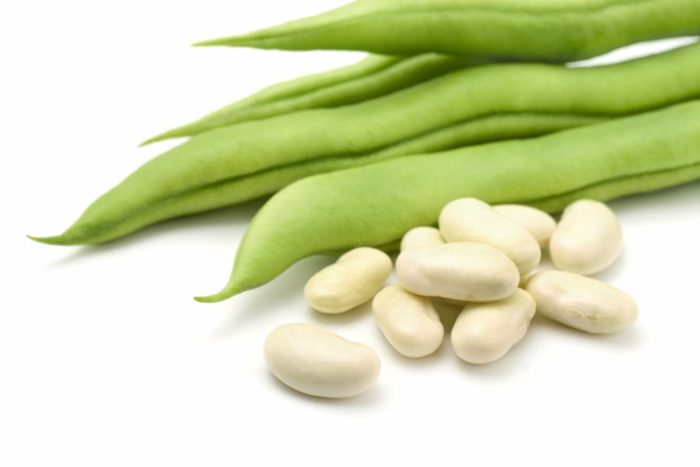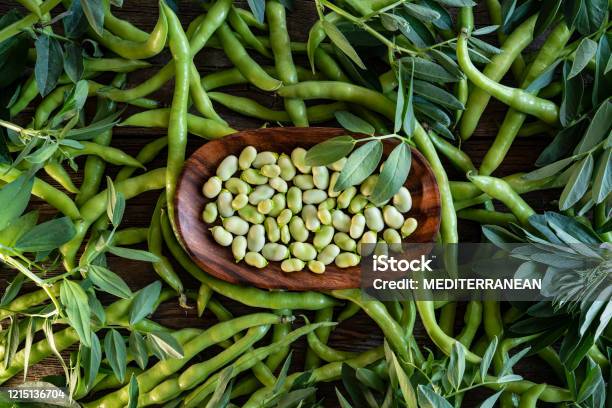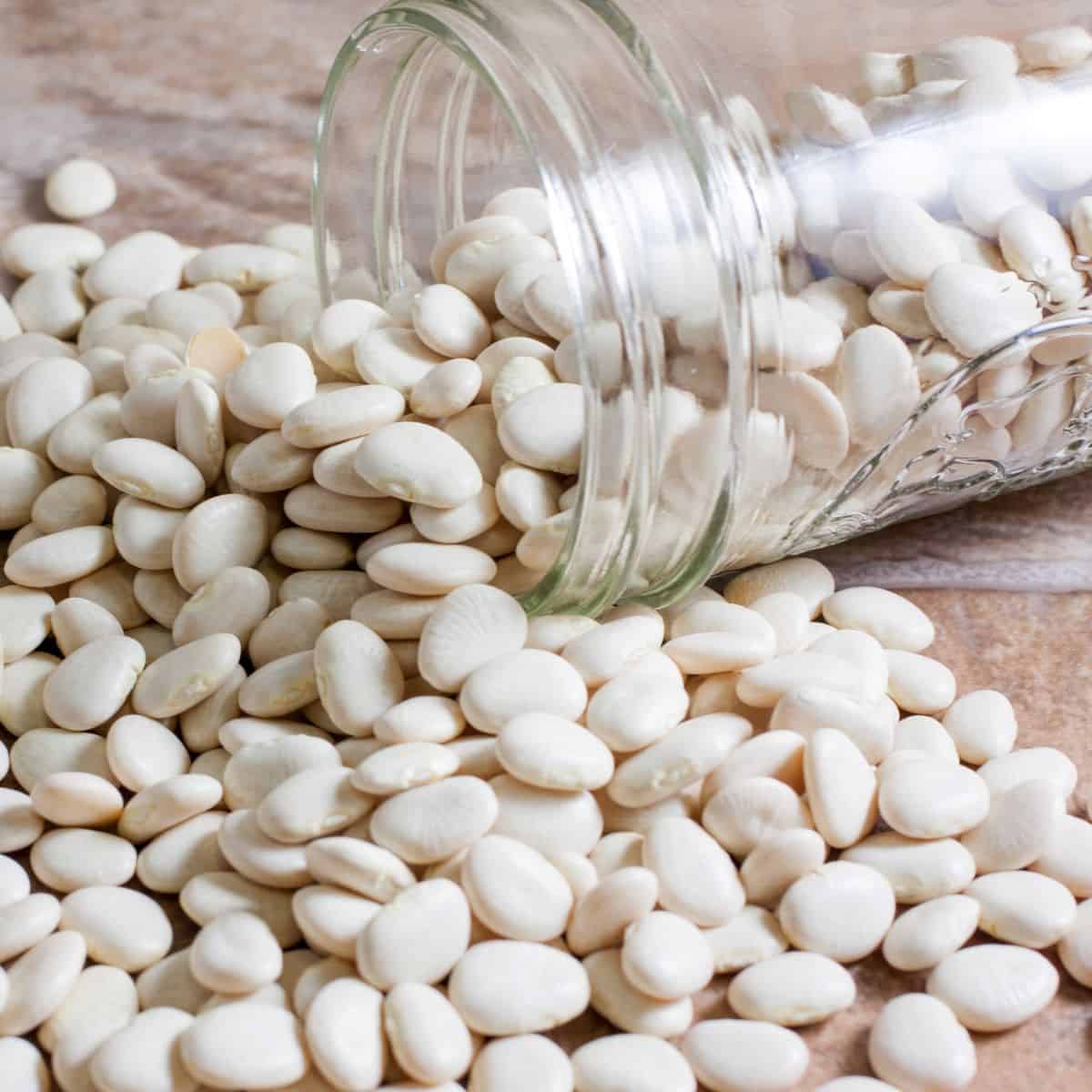Introduction

Lima beans and Fava beans are two popular legumes that have long been enjoyed for their delicious taste and nutritional benefits. These legumes offer a variety of culinary uses and add a great depth of flavor to any dish. While Lima beans have a mild and slightly sweet taste, Fava beans have a more earthy and slightly bitter flavor. Understanding the differences between these legumes can help you make informed choices when cooking and incorporating them into your diet. In this article, we will delve into the nutritional benefits, culinary uses, health benefits, and growing and harvesting practices of Lima beans and Fava beans. So let’s dive into the legume legacy and discover the unique characteristics of these two fantastic beans.
Overview Of Lima Beans Vs Fava Beans
Lima beans and Fava beans are two popular legumes that differ in shape, taste, and culinary uses. Lima beans are small, flat, and kidney-shaped, while Fava beans are larger, flat, and oval-shaped. In terms of taste, Lima beans have a mild flavor with slight nutty and sweet undertones, making them versatile in various dishes. On the other hand, Fava beans have a more earthy and slightly bitter taste, adding depth to stews, soups, and salads. Despite their differences, both beans offer numerous nutritional benefits and can be a delicious addition to any meal.
Nutritional Benefits
Both Lima beans and Fava beans offer a range of nutritional benefits. Lima beans are rich in fiber, providing digestion support and promoting healthy cholesterol levels. They are also a good source of manganese, potassium, iron, and vitamins B1, B5, and B6, which are essential for energy production and maintaining a healthy nervous system. Fava beans, on the other hand, are high in copper, which plays a key role in iron absorption and the formation of red blood cells. They also contain phosphorus, which helps build strong bones and teeth. Incorporating both beans into your diet can contribute to a well-rounded and nutritious meal plan.
Nutritional Content Of Lima Beans

Lima beans are powerhouse legumes that offer a variety of essential nutrients. One cup of cooked lima beans contains approximately 216 calories and provides a significant amount of dietary fiber, about 13 grams. They are also an excellent source of protein, supplying around 15 grams per cup. Lima beans are packed with vitamins and minerals, including folate, manganese, potassium, and iron. Additionally, they contain important B vitamins such as thiamine, riboflavin, and niacin. Incorporating lima beans into your diet can contribute to a well-rounded and nutritious meal plan.
Nutritional Content Of Fava Beans
Fava beans, also known as broad beans, are a nutrient-rich legume with a unique flavor and texture. One cup of cooked fava beans contains approximately 187 calories. They are an excellent source of dietary fiber, providing about 9 grams per cup. Fava beans are also packed with vitamins and minerals, including folate, manganese, potassium, and iron. Additionally, they contain essential B vitamins such as thiamine, riboflavin, and niacin. Adding fava beans to your diet can contribute to a well-rounded and nutritionally diverse meal plan. They make a delicious addition to salads, soups, and stews.
Culinary Uses
Culinary Uses:
Lima Beans: Lima beans are versatile and can be enjoyed in various culinary creations. They are commonly used in soups, stews, and casseroles, adding a creamy texture and mild flavor. Lima beans can also be mashed and seasoned, serving as a delicious side dish. Additionally, they can be used as a protein-rich ingredient in vegetarian burgers or patties. Lima beans are a great addition to salads, providing a hearty and nutritious element.
Fava Beans: Fava beans are a staple in Mediterranean cuisine, particularly in Middle Eastern and North African dishes. They are often featured in delicious dips and spreads, such as the famous Egyptian dish, ful medames. Fava beans can also be pureed and used as a base for soups or added to pasta dishes for a burst of flavor. Roasted fava beans make a satisfying and healthy snack alternative. Their unique taste and texture make them a versatile ingredient in many recipes.
Culinary Uses Of Lima Beans

Lima beans are incredibly versatile in the kitchen and can be used in a variety of culinary creations. They are commonly found in succotash, a traditional American dish that combines lima beans with corn and other vegetables. Lima beans also shine in soups, stews, and casseroles, adding a creamy texture and mild flavor. They can be mashed and seasoned to create a delicious side dish. For vegetarian options, lima beans can be used as a protein-rich ingredient in burgers or patties. Adding lima beans to salads provides a hearty and nutritious element. Experimenting with lima beans in different recipes will open up a world of flavors and textures!
Culinary Uses Of Fava Beans
Fava beans are incredibly versatile in the kitchen, adding a unique flavor and texture to a variety of dishes. They are commonly used in Mediterranean and Middle Eastern cuisines. Fava beans can be cooked and pureed to make a delicious and creamy dip, such as the classic Egyptian dish, ful medames. They can also be added to salads, soups, and stews, providing a protein-packed and satisfying element. Fava beans pair well with ingredients like garlic, lemon, mint, and olive oil, creating vibrant and flavorful dishes. Whether roasted, sautéed, or mashed, fava beans are a culinary delight.
Health Benefits
Both Lima Beans and Fava Beans offer a range of health benefits. Lima beans are a great source of dietary fiber, which can aid in digestion and promote weight loss. They are also rich in iron, which is essential for red blood cell production and oxygen transport. Fava Beans, on the other hand, are packed with protein, making them an excellent meat alternative for vegetarians and vegans. They also contain high levels of vitamins and minerals like folate, magnesium, and potassium, which support overall health and help prevent chronic diseases. Incorporating these legumes into your diet can contribute to a well-rounded and nutritious eating plan.
Health Benefits Of Consuming Lima Beans

Lima beans offer a multitude of health benefits that make them an excellent addition to your diet. These legumes are a great source of dietary fiber, which aids in digestion and promotes a feeling of fullness, making it beneficial for weight management. Additionally, Lima beans are rich in iron, essential for the production of red blood cells and oxygen transport throughout the body. They also provide a good amount of potassium, which helps regulate blood pressure. Incorporating Lima beans into your meals can contribute to a well-rounded and nutritious eating plan.
Health Benefits Of Consuming Fava Beans
Fava beans are packed with health benefits that can enhance your overall well-being. These legumes are a great source of dietary fiber, which aids in digestion and helps maintain a healthy weight. They are also rich in vitamins and minerals, including folate, magnesium, and manganese. Fava beans are known for their high antioxidant content, which can reduce inflammation and protect against chronic diseases. Moreover, they provide a good amount of protein, making them an excellent choice for vegetarians and vegans. Adding fava beans to your diet can contribute to improved heart health, better digestion, and increased energy levels.
Growing And Harvesting
Growing and harvesting practices for Lima Beans and Fava Beans differ slightly. Lima beans are typically grown in the spring and fall months and require a warm climate with well-drained soil. They can be sown directly into the garden or started indoors and transplanted. Harvesting usually takes place when the pods are plump and the beans inside are fully developed.
On the other hand, Fava beans are a winter crop and can tolerate colder temperatures. They are usually sown in late winter or early spring and take longer to mature compared to Lima beans. Harvesting is done when the pods are large and the beans inside are tender and bright green.
Both Lima beans and Fava beans provide a bountiful harvest and are a great addition to any home garden.
Growing And Harvesting Practices For Lima Beans

Lima beans thrive in a warm climate with well-drained soil, making them ideal for planting in the spring and fall months. They can be directly sown into the garden or started indoors and later transplanted. When it comes to harvesting, it is best to wait until the pods are plump and the beans inside are fully developed. This ensures that the beans are tender and flavorful. By following these practices, home gardeners can enjoy a bountiful harvest of Lima beans to use in a variety of delicious recipes.
Growing And Harvesting Practices For Fava Beans
Fava beans, also known as broad beans, have different growing and harvesting practices compared to Lima beans. Fava beans are a winter crop and can tolerate cold temperatures. They are typically planted in the fall or early spring. Fava beans prefer well-drained soil and full sun exposure. When it comes to harvesting, it is best to wait until the pods are fully mature and the beans inside have reached their full size. The beans should be harvested before the pods become dry and the beans harden. By following these practices, gardeners can ensure a successful fava bean harvest.
Conclusion
In conclusion, Lima beans and Fava beans are both nutritious legumes that offer a range of health benefits and culinary uses. Lima beans are rich in protein, fiber, and minerals, making them a great addition to a balanced diet. Fava beans, on the other hand, are known for their high folate and iron content, making them beneficial for pregnant women and those with anemia. Both beans can be incorporated into stews, salads, and other dishes for added flavor and texture. Ultimately, the choice between Lima beans and Fava beans depends on personal preference and dietary needs.
Key Differences Between Lima Beans And Fava Beans

Lima beans and fava beans may both be legumes, but they do have some key differences. One of the main distinctions is their taste. Lima beans have a mild flavor with nutty and sweet undertones, while fava beans have a more distinct, earthy taste. Another difference is their size and texture. Lima beans are smaller and smoother, while fava beans are larger and have a slightly grainy texture. Additionally, fava beans have a tougher, outer skin that needs to be removed before consuming, whereas lima beans have a softer and thinner skin. These differences in taste and texture make each bean unique and suitable for different culinary uses.
Recipe Ideas And Cooking Tips
There are countless delicious ways to incorporate lima beans and fava beans into your meals. Here are some recipe ideas and cooking tips to inspire your culinary adventures:
- Soups and stews: Both lima beans and fava beans can add depth and heartiness to soups and stews. Try adding them to a vegetable or bean-based soup for extra protein and fiber.
- Salads: Roasted fava beans and blanched lima beans make great additions to salads. Toss them with fresh greens, cherry tomatoes, and a tangy dressing for a satisfying and nutritious meal.
- Pasta dishes: Add cooked lima beans or fava beans to your favorite pasta dishes for added texture and protein. They work well in creamy sauces or tossed with garlic, olive oil, and fresh herbs.
- Bean dips: Puree cooked lima beans or fava beans with garlic, lemon juice, and olive oil to make a flavorful bean dip. Serve it with sliced vegetables or pita chips for a healthy snack or appetizer.
- Roasted or grilled: Coat fava beans or lima beans with olive oil, salt, and your favorite spices, then roast or grill them until they’re crispy. They make a delicious and nutritious alternative to chips or fries.
When cooking with lima beans or fava beans, be sure to soak dried beans overnight and cook until they are tender. If using canned beans, rinse them well before using to remove any excess sodium. Experiment with different flavor profiles and cooking methods to discover your favorite way to enjoy these versatile legumes.
FAQ About Lima Beans Vs Fava Beans: Delving Into The Legume Legacy
Q: What are the key differences between Lima beans and Fava beans?
A: Lima beans are small, flat, and green with a buttery texture, while Fava beans are larger, oval-shaped, and have a meatier taste.
Q: How do the nutritional profiles of Lima beans and Fava beans compare?
A: Lima beans are rich in protein, fiber, and antioxidants, whereas Fava beans are a good source of folate, manganese, and iron.
Q: Can Lima beans and Fava beans be used interchangeably in recipes?
A: While both beans can be used in various dishes, their flavors and textures differ, so it’s best to choose based on the specific recipe.
Q: Are there any allergen considerations for Lima beans and Fava beans?
A: Some individuals may be allergic to Fava beans due to their potential to trigger a condition known as favism, which affects certain individuals with G6PD deficiency.
Q: How should Lima beans and Fava beans be prepared and cooked?
A: Lima beans need to be shelled and cooked thoroughly, while Fava beans should be peeled after boiling to remove the tough skin for a smoother texture.
Q: Are there any cultural or regional preferences for Lima beans or Fava beans?
A: Lima beans are popular in Latin American and Asian cuisines, while Fava beans are commonly used in Mediterranean and Middle Eastern dishes.
Q: How do Lima beans and Fava beans contribute to a healthy diet?
A: Both Lima and Fava beans are nutrient-dense legumes that can enhance the nutritional value of meals by providing essential vitamins, minerals, and plant-based protein.

Duke City Kitchen, known for its fresh, simple, and delicious cuisine, has a rich history deeply rooted in the heart of the local food scene. Since its inception, Duke City Kitchen has been dedicated to providing an exceptional dining experience that celebrates the region’s flavors. Founded by a passionate group of food enthusiasts, Duke City Kitchen opened its doors with the vision of offering a welcoming space where people could gather to enjoy thoughtfully prepared meals made from the finest, locally sourced ingredients. This commitment to quality and community has been a driving force behind Duke City Kitchen’s success.